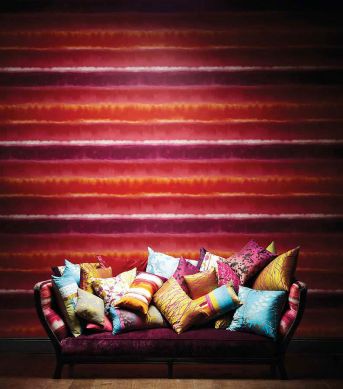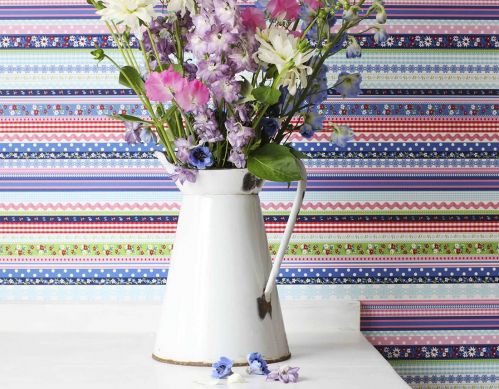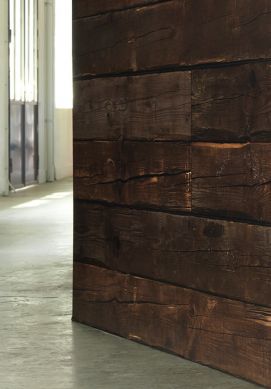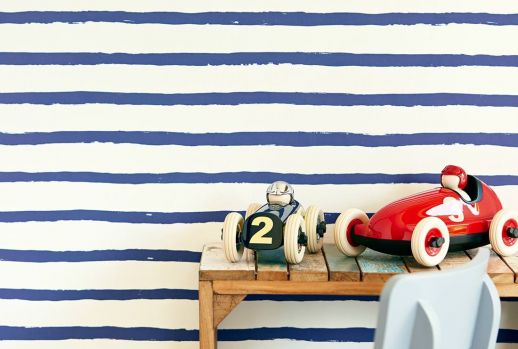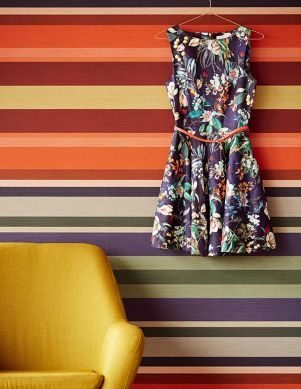Lengthwise instead of across, horizontally instead of vertically. Depending on the pattern, wallpapers can be hung horizontally, adding dynamic movement. Short walls can visually appear longer with this trick. This guide will explain the individual steps.
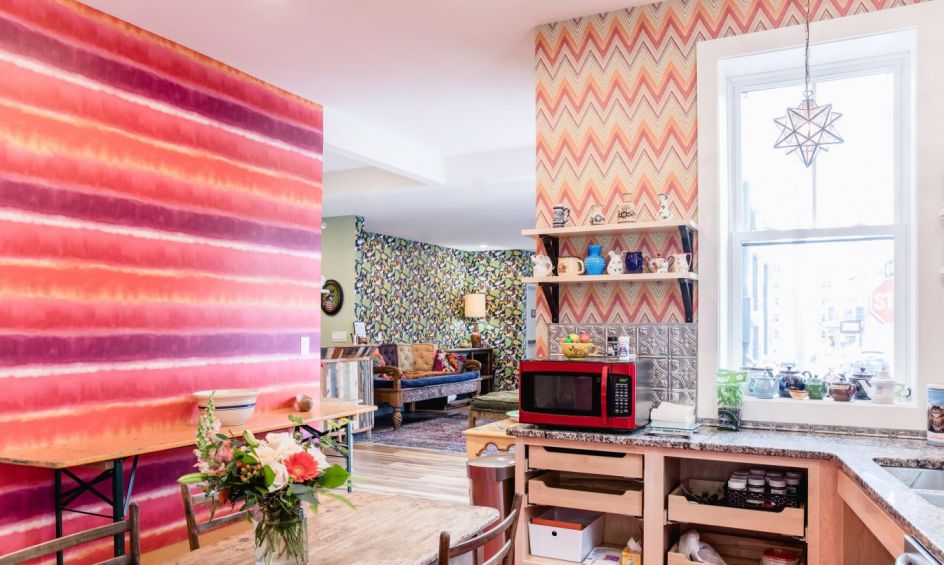
Prerequisites and tips for horizontal wallpapering
When it comes to putting up wallpaper in a horizontal direction, some prerequisites and hints should be taken into consideration. We have put together the most important points to make sure you get the results you hope for.
1. Choice of Wallpaper: Patterns, effects, structures, colours
If you want to put your wallpaper up lengthwise, you need to apply some lateral thinking. First things first: not all wallpapers and patterns are suitable for horizontal hanging. It depends very much on individual patterns and colours.
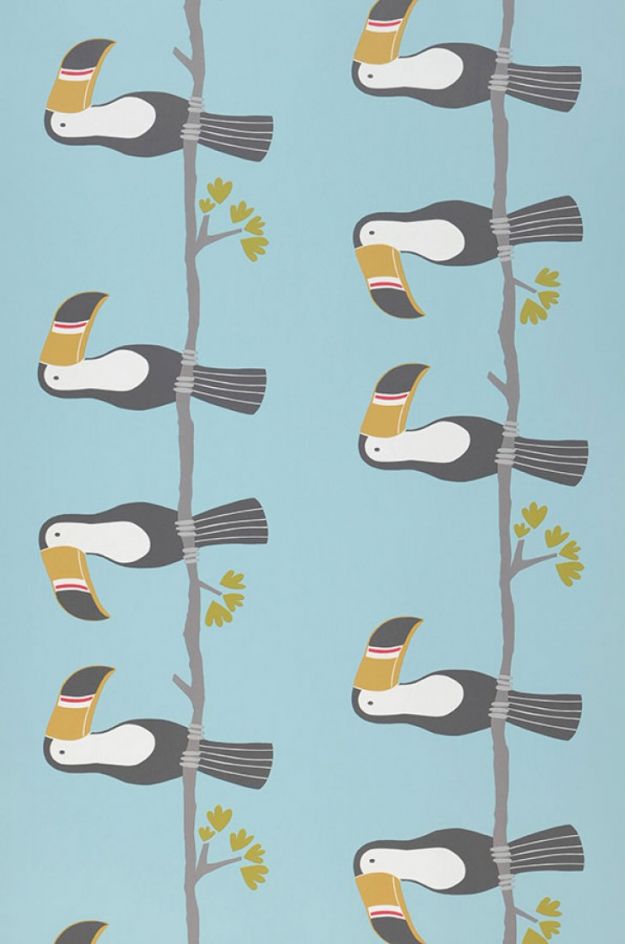

Many geometric patterns are suitable, especially stripe wallpapers, potentially with wavy stripes. This adds movement to a room and, with the right colour choice, might remind us of the beautiful ocean. Wallpapers with flowers or plant tendrils or with Baroque/Retro patterns are also a good choice for horizontal wallpapering projects. Material imitation wallpapers, e.g. stone, wood, marble or tile imitations, can develop a new effect spectrum when put up lengthwise. Single-colour wallpapers with colour shading or colour gradients are another good option.
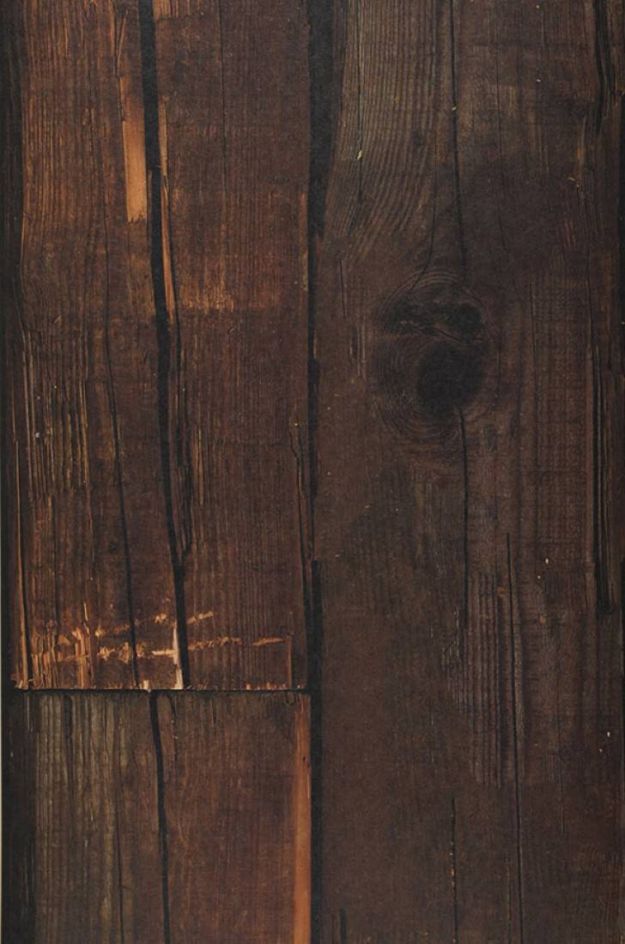
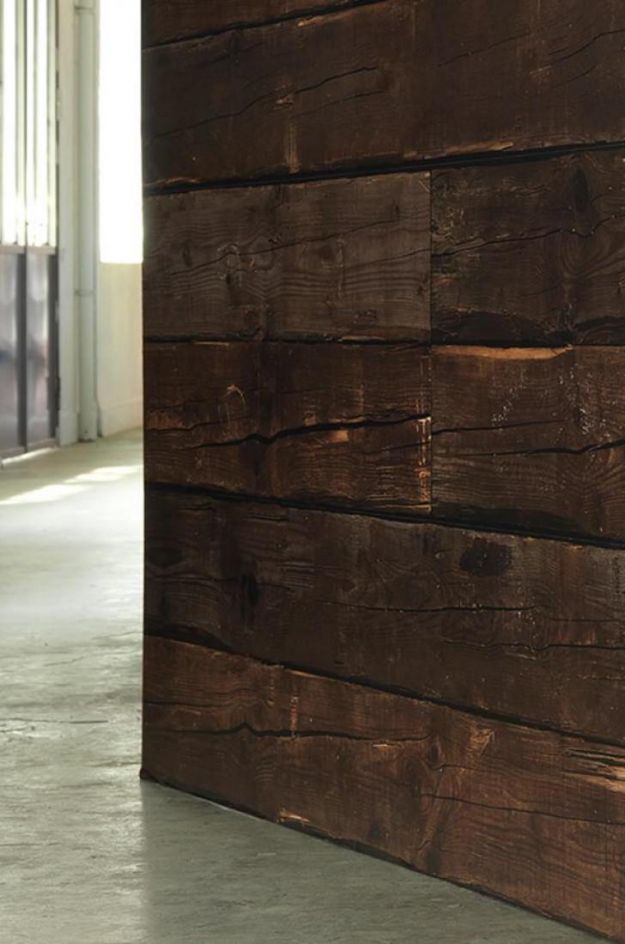
The most important consideration is that the pattern isn't upside-down and has a harmonious feel to it. The best way to test this is to hold it up on the wall and have a good look. Examples for wallpapers that are unsuitable for horizontal hanging are pattern wallpapers with motifs like characters or objects.
Another aspect to consider is the structure of the wallpaper, e.g. of nature, textile and flock wallpapers. Hung in a horizontal direction, it has to be pleasing to the eye of the beholder and mustn't be distracting or irritating. Furthermore, effects like shine and shimmer, glitter or metal all need to be thought about. These can create unwanted and unsightly light reflexes or glare when the wallpaper is hung horizontally.

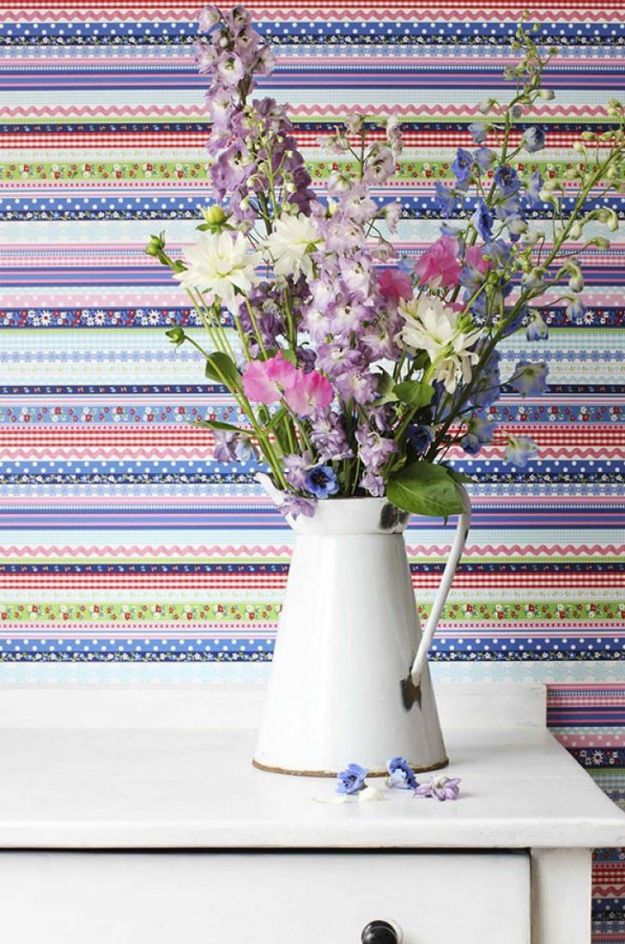
When in doubt, stick one or two lengths or strips of wallpaper to the wall with drawing pins to test pattern, colour and effects. When it comes to colour choices, the main aspects to think about are the size, height, and layout of the room.
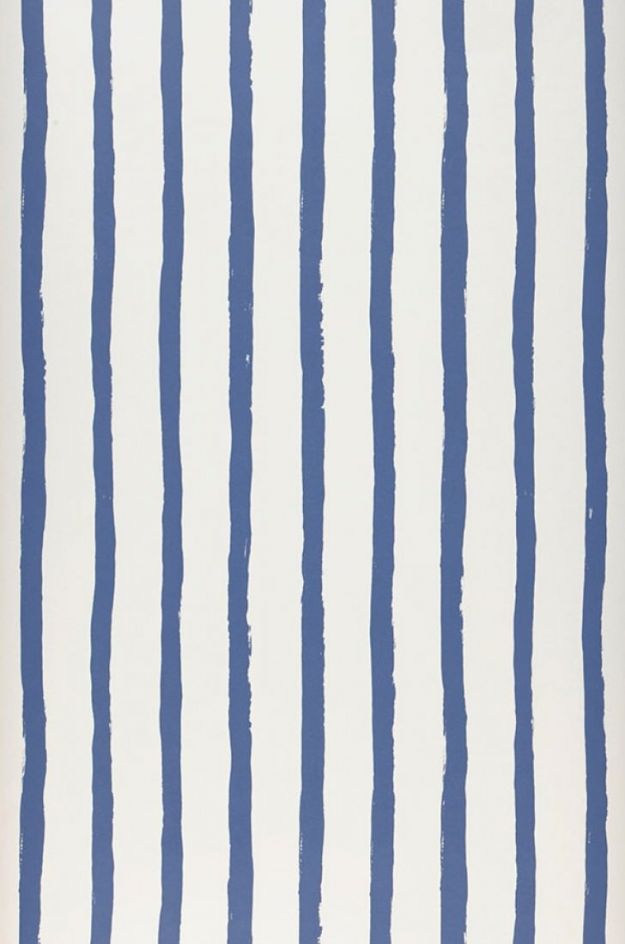
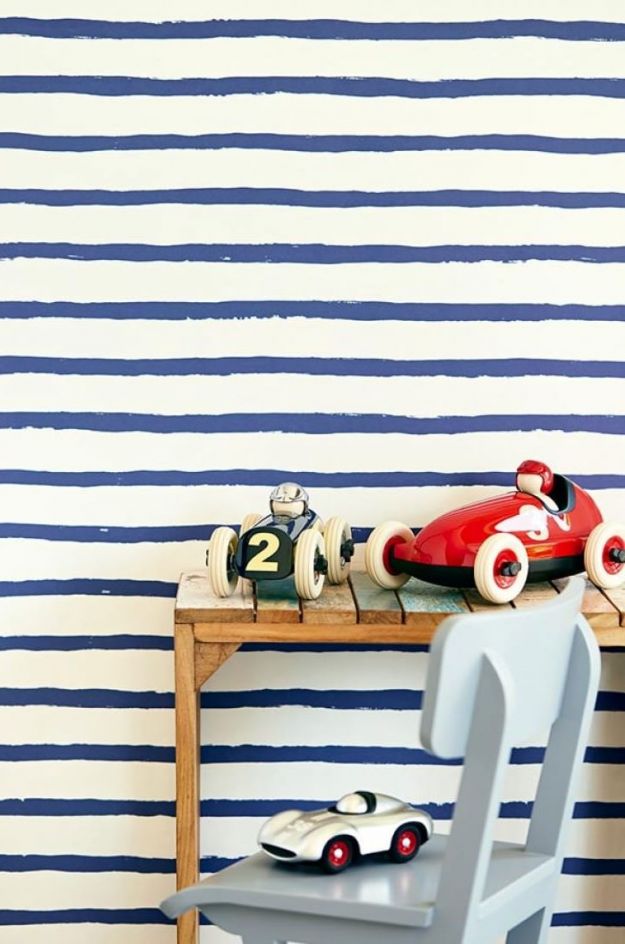
For wallpapers that are put up lengthwise, the pattern of the strip that has already been put up on the wall has to match that of the next one. The easiest way to achieve this is by choosing seamless pattern wallpapers. For wallpapers with an offset pattern, i.e. a "seam", the pattern beginning should be determined and the wallpaper should be cut accordingly. Please refer to our wallpapering instruction guide How to cut wallpaper correctly.

Wallpapers that are hung "in reverse" are a specific consideration - no matter if they are put up vertically or horizontally. As with the rapport, there is a specific symbol (two opposing arrows) in the insert label of the wallpaper roll to indicate this. Further information can be found in our guide What does "reverse hanging" mean?

2. Carrier Layer
Horizontal wallpapering means working against gravity, which is why the carrier material has an important role to play. The best choice are wallpapers with a non-woven carrier layer as here, the wallpapering paste is applied directly to the wall rather than to the wallpaper itself. Conveniently, non-woven wallpapers can be rolled up and unrolled piece-by-piece along the pasted wall. It is even possible for one person to do this alone.
Paper-based wallpapers require specific soaking times and have to be folded rather than rolled up. Putting them up on the wall is almost impossible without help. The length of wallpaper can tear when gravity pulls it down.
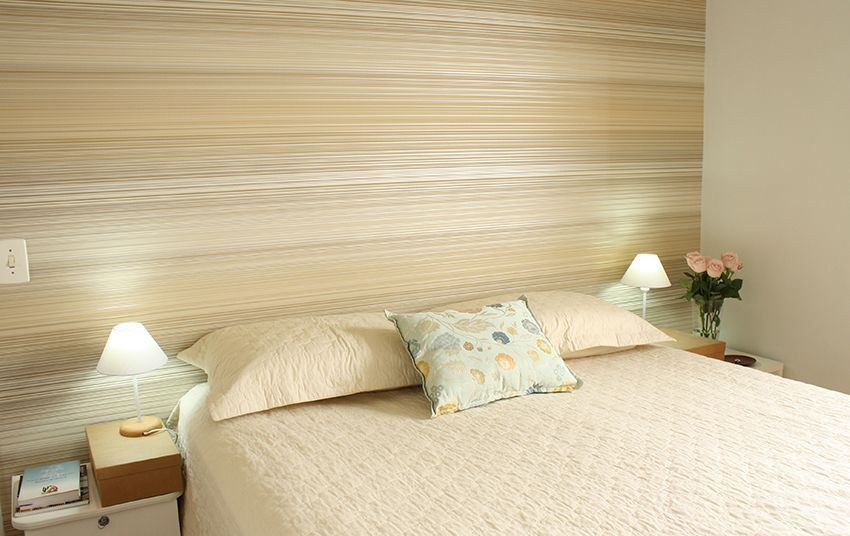
3. Straight walls and floors
Whilst deficits in terms of straight lines can easily (and usually) almost invisibly be rectified when wallpaper is put up in a vertical direction, the situation is very different when it comes to putting up wallpaper horizontally. It is therefore important to check whether walls, floors and ceilings are level. The best tool for this is a plumb level. This should be used in all the areas mentioned above, plus in corners. Minimal deviations aren't a huge problem, but as soon as there are more significant irregularities, you should step away from the idea of horizontal wallpapering. The results won't be satisfactory and the wallpaper will be nothing short of a daily annoyance. Putting the wallpaper up would also be tricky, as it is impossible to create straight lines if walls, floors or ceilings aren't straight.

Instructions for horizontal wallpapering based on the example of a non-woven model without rapport
Once the perfect wallpaper has been chosen, the project can get started. A second person is an enormous help, especially when it comes to tackling the higher areas. First, prepare the room and the surface. Our Wallpapering Guides show you how to get it right. The subsequent steps are as follows:
Measuring and cutting the wallpaper
- First of all, measure the height of the wall.
- Divide the height of the wall by the width of the wallpaper, and round up - this will result in the number of lengths or strips of wallpaper needed. Example: Wall height 250 cm, wallpaper width 53 cm. Rounding up, this results in 5 strips.
- Now decide how to distribute the strips along the wall, i.e. choose the position of the first strip. Make sure there are no seams at eye level.
- It's best to start with the second strip from the top (ceiling).
- The first position should be the width of the strip minus 2 cm. Now draw a horizontal plumb line along the entire width of the wall. Use a spirit level to make sure that the line is 100% straight.
- Measure the width of the wall and add about 2 - 3 cm.
- Now cut the strips according to the length measurements and roll up the strip from left to right.
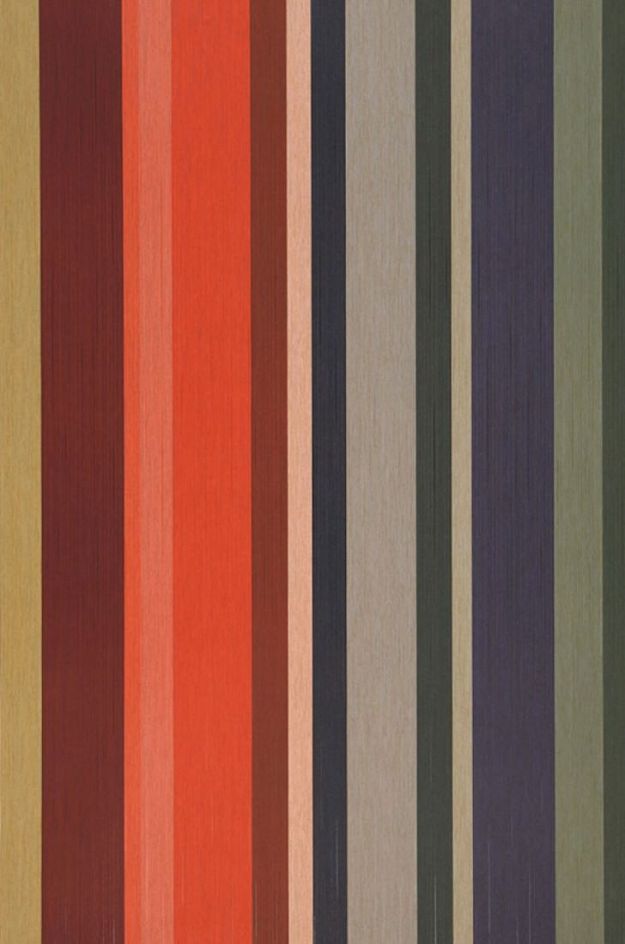

Putting up lengths of wallpaper
- Apply wallpapering paste to the wall.
- Set the first length along the plumb line with an overlap towards the adjacent wall surface.
- Now unroll the length slowly along the plumb line and carefully press it against the wall. Then use a wallpaper roller to prevent blisters and creases.
- Cut off the overlap in the corners.
- Now put up the top length in the same manner. Make sure you create absolutely straight seams (only possible with straight walls!) and use a seam roller to finish.
- Now cut off the surplus wallpaper at the ceiling.
- Then add another length under the first one.
- After you have put up three lengths, you should check the overall impression. Stand a few meters away from the wall and check the lengths that are already in place. If it all looks straight, you can continue putting up the remaining lengths.
- If the last strip of wallpaper at the bottom is too long, you can shorten it, but remember to include the overlap towards the floor.
- Finally, remove the overlap - and voilà, you've made it!

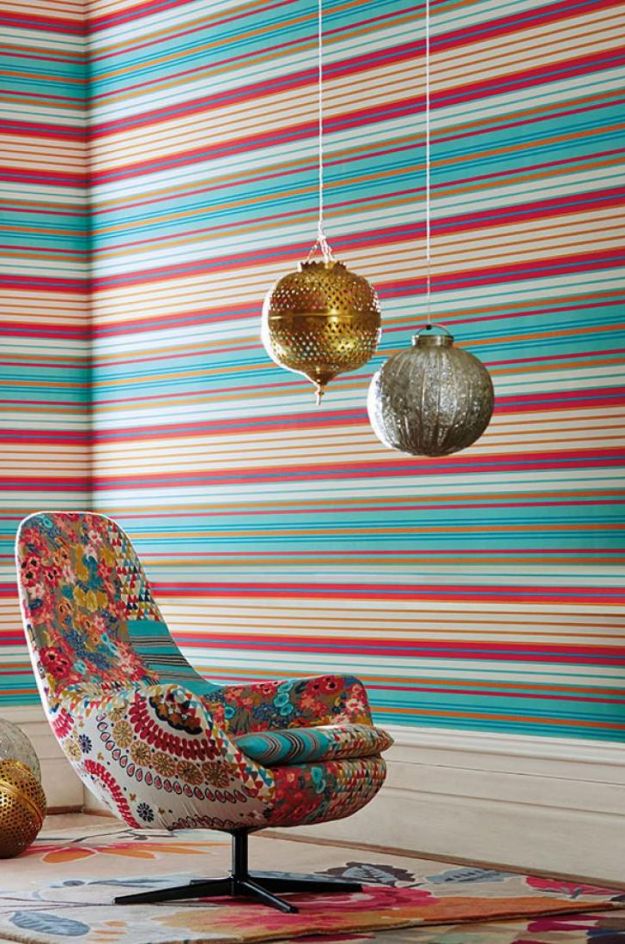
For wallpapers with a paper-carrier, the first steps (taking measurements and cutting accordingly) are identical with those for non-woven carriers. Wallpapering paste is then added to the carrier layer so it can soak in. As with wallpapering ceilings, you will need a second person to help you. After the required soaking time, the two people pick up the wallpaper length. One person unfolds about 50 cm of the length and presses it onto the wall, the other person holds the remaining piece. Again, it is recommended that you use a wallpaper roller to finish the job.


